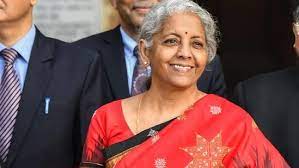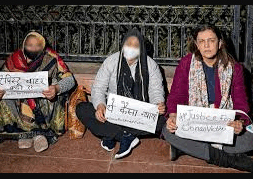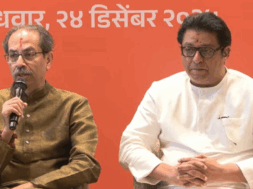
Manas Dasgupta
NEW DELHI, Feb 1: The Union Finance Minister Nirmala Sitharaman has provided big relief for taxpayers in the government’s last full Budget before the 2024 national election.
Ms Sitharaman has simplified the income tax slabs in the new tax regime which will become the default version. There will be no tax on income on up to ₹ 7 lakh a year — up from ₹ 5 lakh — and the highest applicable tax rate in India after surcharges has been reduced from 42.7 per cent to 39. The new tax regime is “attractive as it gives a greater rebate. It also provides for simplified and smaller slabs,” the minister said.
The tax slabs will be cut to five instead of seven in the new regime. There will be no tax for income up to ₹ 3 lakh. Income between ₹ 3-6 lakh will be taxed at 5 per cent; those earning between ₹ 6 and 9 lakh will be taxed at 10 per cent, income of ₹ 9-12 lakh will be taxed at 15 per cent, for ₹ 12-15 lakh income it will be 20 per cent and those earning ₹ 15 lakh and above will be taxed at 30 per cent.
The government will spend a record ₹ 10 lakh crore on longer term capital expenditure, an increase of 33 per cent, extending its strategy to revive growth after Covid. This will be 3.3 per cent of the GDP in 2023-2024.
The government has outlined seven priority areas – including development, reaching the last mile, infrastructure and investment, unleashing the potential, green growth, youth power and financial sector.
The agricultural credit target has been increased to ₹ 20 lakh crore and in another populist measure, allocation for PM Awas Yojna increased by 66 per cent to over ₹ 79,000 crore. The government has also promised 50 new airports and helipads.
For the railways, the minister announced an outlay of ₹ 2.4 lakh crore — the highest in almost a decade and four times the last year’s budget. “This is about nine times the outlay made in 2013-14,” she said, comparing it with the last year of the Congress-led UPA governance.
The Permanent Account Number (PAN) will be used as a common identifier for all digital systems of specified government agencies. The KYC process will be simplified and a one-stop update of identity will be established through Digilocker service and Aadhaar. A system of ‘Unified Filing Process’ will be set-up to streamline the current process of duplication for multiple departments for ease of business.
With a focus on switching to green fuel, the government is targeting 5 MT of Green Hydrogen production by 2030, Ms Sitharaman said.
The budget laid out a slew of measures to bolster infrastructure for creating more jobs and attract investment ahead of next year’s crucial national election. With a year to go for national polls, it was crucial for the Modi government to tackle the issues of high unemployment and inflation as he seeks to win a third consecutive term. Ms Sitharaman focused on farmers, backward castes and women to deal with the inequities exacerbated by the pandemic.
The government increased capital spending 33% to 10 trillion rupees ($122 billion) that will enable the country to expand its network of roads, ports and airports and make it an attractive destination for investors.
The government has increased spending in the farm sector, which accounts for about 19% of the economy. The budget proposes to spend 22 billion rupees ($269 million) on high-value horticulture and set up an agriculture accelerator fund to finance farm start-ups. This will benefit companies such as Kaveri Seed Co., Dhanuka Agritech Ltd., Bombay Super Hybrid Seeds, Rashtriya Chemicals & Fertilizers Ltd.
To capture the surge in travel demand, India will select 50 destinations to promote domestic tourism. It will also develop an app to guide tourists on food streets, security, physical and virtual connectivity to lift their experience. Ticketing companies and hotels such as Indian Railway Catering and Tourism Corp., Thomas Cook India Ltd., Indian Hotels and EIH Ltd. will be the beneficiaries.
Crucial to boosting last-mile connectivity, India has decided to build 50 additional airports, heliports and aerodromes and identified 100 fresh projects. Railways will benefit from a record capital outlay of 2.4 trillion rupees. This is a win for airport operators such as Adani Airport Holdings Ltd., GMR Airports Infrastructure Ltd., GVK Airport Developers Ltd., and construction companies like Larsen & Toubro Ltd. and Bharat Heavy Electricals Ltd.
Higher capital expenditure and investments for housing, infrastructure, railways announced in the budget are positive for steel mills and cement makers. Key gainers include Tata Steel Ltd., JSW Steel Ltd., and Jindal Steel & Power Ltd.
India plans to provide impetus to green mobility by exempting from customs duty on import of capital goods required to manufacture lithium-ion cells used in electric vehicle batteries. This will be a boost for battery makers such as Exide Industries Ltd. and Amara Raja Batteries Ltd. and automakers like Tata Motors Ltd., Mahindra & Mahindra Ltd.
The budget provided 350 billion-rupee investment in energy transition and carbon neutrality initiatives. The government will provide financial support to battery energy storage systems with capacity of 4,000 megawatt hour.
The Jewelry stocks, however, dropped after the government left the import taxes on gold unchanged despite demand from the bullion industry to reverse the hike announced in July. The government also increased the import tax on silver. A higher tax increases the cost for consumers as the country imports almost all the bullion it consumes. The benchmark gold futures in Mumbai rose as much as 1.3% to an all-time high of 57,950 rupees per 10 grams. Key losers would be Kalyan Jewellers India Ltd., Titan Co. and PC Jeweller Ltd.














